Mari kita mulai dengan menetapkan latarnya. Saat itu sudah larut malam dan Anda membungkuk di belakang meja, memegang senter ponsel, menyipitkan mata melihat kabel-kabel kusut yang meliuk-liuk di bagian belakang komputer. Mendesah...ini terlihat lebih parah daripada kabel headphone setelah dicuci di mesin cuci! Namun Anda terus berjuang, bertekad untuk melacak setiap kabel kembali ke sumbernya dan menata kekacauan ini.
Saat Anda mengurai setiap kabel, Anda akan melihat bahwa semuanya tidak terlihat sama. Ada yang tebal, ada yang tipis. Ada yang terlilit erat, ada yang longgar. Dan (periksa dengan saksama), kabel-kabel tersebut sebenarnya memiliki teks yang berbeda yang tercetak pada selongsong plastik! Cat5, Cat6, Cat 7 - apa artinya semua ini?
Nah, teman-teman, itulah yang akan kita bahas hari ini (dengan maksud tertentu)! Pada saat kita mencapai akhir perjalanan ini, Anda akan menjadi ahli kabel bersertifikat, yang dapat dengan mudah masuk ke lemari jaringan mana pun seperti Anda memiliki tempat itu (jika itu rumah Anda, Anda memilikinya!).
Jadi, hubungkan ponsel Anda, pastikan Anda merasa nyaman, dan mari kita mulai mengurai masalah!
Daftar isi
- 1. Kursus Singkat tentang Kabel Ethernet Kategori
- 2. Kapan Menghabiskan Lebih Banyak Uang untuk Kabel Ethernet Masuk Akal?
- 3. Tips Membeli Kabel Ethernet
- 4. Orang Juga Bertanya
- 4.1 Apa perbedaan utama antara kabel Cat6, Cat7, dan Cat8?
- 4.2 Dapatkah saya menggunakan kabel Cat8 untuk jaringan rumah, atau hanya untuk pusat data?
- 4.3 Bagaimana panjang kabel memengaruhi kinerja kabel Ethernet?
- 4.4 Apakah layak berinvestasi pada kabel Cat7 atau Cat8 untuk bisnis kecil?
- 4.5 Apa yang harus saya pertimbangkan saat memasang kabel Ethernet di lingkungan dengan gangguan tinggi?
Kursus Singkat tentang Kabel Ethernet Kategori
Secara sederhana, kabel ethernet digunakan untuk menghubungkan perangkat bersama-sama dalam jaringan kabel. Kabel ini mengirimkan data dalam bentuk sinyal listrik atau optik. Namun, tidak semua kabel Ethernet dibuat sama! Selama bertahun-tahun, standar yang lebih baru telah diperkenalkan yang memungkinkan kecepatan data yang lebih cepat dalam jarak yang lebih jauh.
Standar-standar ini ditetapkan berdasarkan kategori - Cat5, Cat5e, Cat6, Cat7, Cat8, dst. Masing-masing memiliki spesifikasi dan kemampuannya sendiri. Anggap saja seperti nilai di sekolah - Cat5 sudah cukup baik jika 'tes'-nya melibatkan penjelajahan dasar dan email.Namun kini dengan Netflix 4K dan permainan daring, kami perlu unggul pada level 'Cat8' untuk menangani semua data itu!
Mari kita rangkum secara singkat "tingkat mutu" kabel Ethernet yang berbeda:
- Kucing 5 - Generasi pertama kabel Ethernet yang dirancang untuk jaringan 100 Mbps
- Kategori 5 - Versi perbaikan Cat5, mampu mencapai kecepatan 1 Gbps
- Kategori 6 - Mendukung bandwidth hingga 10 Gbps, ideal untuk rumah & kantor modern
- Kucing 7 - Kabel berpelindung untuk 10 Gbps di lingkungan industri yang menuntut
- Kategori 8 - Standar terbaru yang mendukung kecepatan 40 Gbps
Masih bersama kami? Bagus! Sekarang setelah kita mengetahui keadaannya, mari kita bahas setiap kategori kabel secara lebih rinci. Saatnya memisahkan siswa berprestasi dari siswa yang tidak berprestasi!
Kabel Cat6 - Pekerja Keras yang Andal

Pikirkanlah kabel Cat6 sebagai hewan peliharaan keluarga yang dapat diandalkan. Kabel ini sudah ada sejak lama dan mungkin tidak memiliki beberapa fitur canggih dari kabel yang lebih baru. Namun, kabel ini tetap berfungsi! Bahkan setelah dikunyah oleh anjing berkali-kali!
| Parameter | Spesifikasi Cat6 |
| Kecepatan Maksimum | Kecepatan 10Gbps |
| Panjang Maksimum | 55 meter (180 kaki) untuk kecepatan 10G |
| Perisai | Tidak Terlindungi |
| Kasus Penggunaan Umum | Rumah, kantor kecil |
Beberapa hal utama yang membuat kabel Cat6 begitu dapat diandalkan:
- Kecepatan - Dengan dukungan Ethernet 10 Gbps, Cat6 menangani kecepatan pita lebar rumah modern dengan ruang yang cukup. Bahkan jika Anda meningkatkan ke paket yang lebih cepat dari ISP, kabel Cat6 tidak akan menghambat jaringan Anda.
- Jarak - 55 meter (180 kaki) lebih dari cukup untuk memasang kabel di sebagian besar rumah dan kantor kecil. Hanya gudang besar atau ruang terbuka yang memerlukan kabel yang lebih panjang.
- Keterjangkauan - Sebagai standar lama, kabel Cat6 tersedia secara luas dan harganya sangat terjangkau, terutama jika dibandingkan dengan kabel Cat7 atau Cat8 yang lebih mewah.
Layaknya anjing keluarga yang dapat diandalkan, kabel Cat6 tidak hanya unggul dalam satu hal, tetapi dapat melakukan semua hal yang Anda butuhkan tanpa banyak keributan.
Untuk sebagian besar jaringan rumah dan bisnis kecil, Cat6 telah cukup teruji dan menjadi pilihan utama saat memasang kabel. Kecuali jika Anda memiliki kebutuhan khusus yang memerlukan fitur Cat7 atau Cat8, penggunaan Cat6 dapat menghemat biaya tanpa mengurangi kinerja di dunia nyata.
Sekarang berbicara tentang kabel yang lebih mewah...mari kita lihat apa yang baru di dunia Cat7!
Kabel Cat7 - Pelindung Berani
Jika kabel Cat6 seperti hewan peliharaan keluarga yang setia, kabel Cat7 lebih seperti anjing penjaga yang waspada, berjaga untuk melindungi data berharga Anda!
Kabel ini memberikan perlindungan yang lebih baik terhadap gangguan elektromagnetik (EMI) dan crosstalk dibandingkan dengan Cat6, sembari tetap mendukung kecepatan jaringan 10 Gbps.
| Parameter | Spesifikasi Cat7 |
| Kecepatan Maksimum | Kecepatan 10Gbps |
| Panjang Maksimum | 100 meter (328 kaki) untuk kecepatan 10G |
| Perisai | Terlindung (S/FTP atau S/STP) |
| Kasus Penggunaan Umum | Lingkungan industri dengan banyak EMI |
Manfaat utama kabel Cat7 melalui pelindungan:
- Perlindungan kebisingan - Pelindung berbahan foil atau anyaman jala khusus meminimalkan gangguan dari kabel listrik, mesin, perangkat, dll. di sekitar. Hal ini memungkinkan konektivitas yang stabil bahkan di lingkungan yang bising secara listrik.
- Pencegahan crosstalk - Pelindung dan lilitan yang lebih rapat pada kabel tembaga mengurangi crosstalk antara pasangan kabel dalam kabel itu sendiri. Hal ini meningkatkan kualitas sinyal pada jarak yang lebih jauh.
- Kesiapan lingkungan yang keras - Kabel berpelindung lebih tahan terhadap kondisi industri berat yang melibatkan kotoran, debu, cairan, dan paparan luar ruangan dibandingkan dengan Cat6 yang tidak berpelindung.
Dengan kekuatan perlindungan yang luar biasa ini, kabel Cat7 dengan cepat menjadi pilihan standar untuk jaringan industri, pusat data, dan aplikasi di lingkungan yang keras. Pelindung tambahan ini memang sedikit lebih mahal daripada Cat6 - tetapi memberikan nilai tambah di lingkungan listrik yang bising di mana gangguan dapat menimbulkan malapetaka.
Perlu diingat bahwa untuk penggunaan sehari-hari di rumah, pelindung Cat7 sering kali berlebihan. Kecuali Anda tinggal di dekat gardu listrik, kemungkinan besar streaming Netflix Anda akan berjalan lancar melalui Cat6!
Baiklah, kita telah membahas kategori kabel utama. Sekarang saatnya memasuki wilayah penggemar dengan kabel Cat8 yang hebat! Kabel ini menguatkan semuanya hingga 11 untuk kebutuhan jaringan ekstrem...
Kabel Cat8 - Pembalap Cepat yang Membutakan
Jika kita harus membandingkan kabel Cat8 bagi hewan, itu pasti cheetah. Ramping, berotot, dirancang khusus untuk kecepatan dan kekuatan.
Meskipun Cat6 dan Cat7 sama-sama memiliki kecepatan data 10 Gbps, kabel Cat8 menawarkan peluang yang sangat baik untuk:
Kecepatan 40 Gbps dan 100 Gbps
Ya, Anda benar - kabel ini mampu mengirimkan data hingga 100 miliar bit per detik! Cukuplah untuk mengatakan, itu sangat cepatPernahkah Anda bertanya-tanya bagaimana bursa saham dapat melakukan perdagangan frekuensi tinggi dalam hitungan mikrodetik? Itu berkat sistem jaringan yang dihubungkan dengan kabel Cat8!
| Parameter | Spesifikasi Cat8 |
| Kecepatan Maksimum | 40 Gbps (hingga 100 Gbps) |
| Panjang Maksimum | 30 meter (98 kaki) untuk kecepatan 40G |
| Perisai | Terlindung (S/FTP atau S/STP) |
| Kasus Penggunaan Umum | Pusat data berkecepatan tinggi |
Tentu saja, kecepatan tinggi disertai keterbatasan jarak yang besar. Karena frekuensi yang sangat tinggi, kabel Cat8 maksimal hanya berjarak 30 meter saat beroperasi pada kecepatan 40 Gbps. Kabel ini juga memiliki persyaratan radius tekukan yang ketat dan prosedur terminasi yang rumit.
Ini berarti kabel Cat8 terutama hanya cocok digunakan di pusat data dengan kepadatan tinggi, tempat rak server saling berdekatan. Pelindung yang rumit dan empat pasang sinyal diferensial per kabel memastikan sinyal yang bersih pada frekuensi tersebut.
Jadi, sebagai ringkasan - sangat cepat, tetapi kakinya tidak terlalu panjang. Seperti cheetah sungguhan, kami kira!
Untuk hampir semua skenario rumah dan kantor, Cat8 akan sangat berlebihan. Belum lagi biaya pembelian dan pemasangan yang sangat mahal! Tetap gunakan Cat6 atau Cat7 untuk kebutuhan Anda.
Sekarang setelah kita memperoleh gambaran umum yang solid mengenai berbagai kategori kabel Ethernet yang tersedia, mari beralih ke topik lain dan bicarakan tentang bagaimana ANDA dapat memilih kabel Ethernet yang tepat!
Langkah 1 - Evaluasi Kebutuhan Kecepatan Jaringan Anda
Kita semua senang memiliki mainan baru yang paling keren. Namun, sebagai Orang Dewasa yang Bertanggung Jawab, mari kita berdiskusi secara jujur tentang seperti apa penggunaan Anda sebelum memilih kabel Ethernet.
Meskipun kedengarannya menarik untuk memiliki "kabel Cat8 100 Gbps" di rumah Anda, berikut adalah beberapa angka untuk memberi Anda perspektif:
- Streaming video Netflix 4K = 25 Mbps
- Game cloud Xbox = 10 - 50 Mbps
- Rata-rata koneksi pita lebar rumah tangga di AS = 100 Mbps
Anda mengerti maksud kami? Kecuali jika Anda memasang kabel serat optik pita lebar 10 Gigabit per detik di rumah, kemungkinan besar Anda tidak memerlukan lebih dari yang dapat disediakan kabel Ethernet Cat6 - kapasitas data 10 Gbps!
Dan bahkan dengan munculnya serat optik 10G kelas konsumen, pemasangan Cat6 saat ini akan memberi Anda banyak ruang untuk masa mendatang. Kabel tersebut dapat menangani 10G dengan baik untuk panjang kabel yang umum.
Pertimbangan utama di sini adalah Anda saat ini kecepatan internet dan rencana peningkatan apa pun dalam 5-10 tahun ke depan. Perhitungkan angka-angka tersebut dalam perspektif - untuk sebagian besar rumah dan kantor kecil, Cat6 dapat menyelesaikan tugasnya sekarang dan di masa mendatang. Cat8 terbaru dan terhebat akan menyediakan terlalu banyak tanpa manfaat nyata di dunia nyata.
Tentu saja, jika Anda memiliki kebutuhan khusus seperti komputasi berperforma tinggi, pusat data, beban kerja streaming yang berat, dll. - hal tersebut dapat diuntungkan dengan peningkatan ke Cat7 atau Cat8. Kami akan membahas kasus penggunaan tersebut nanti!
Untuk saat ini, mari kita asumsikan penggunaan di rumah secara umum. Setelah Anda mengetahui kecepatan internet yang Anda butuhkan saat ini dan beberapa tahun ke depan, memilih kategori kabel Ethernet yang tepat akan menjadi jauh lebih mudah!
Sekarang ke pertimbangan penting berikutnya - jarak kabel.
Langkah 2 - Ukur Jarak Instalasi Anda
Berikut ini adalah area lain yang paling sering menjadi pertimbangan konsumen saat membandingkan kabel Cat5, Cat6, dan Cat7. Berapa panjang kabel sebenarnya yang Anda butuhkan?
Banyak orang membeli kabel sepanjang 100 kaki saat router dan komputer mereka berjarak... 10 kaki. Kami juga pernah melakukan kesalahan karena menyediakan kabel dengan panjang yang berlebihan di masa lalu!
Namun seperti yang telah kita bahas sebelumnya, dengan standar Ethernet kecepatan yang lebih tinggi, dukungan maksimum jarak turun melalui kabel yang sama:
- Cat6 = 55 meter (180 kaki) pada 10 Gbps
- Cat7 = 100 meter (328 kaki) pada 10 Gbps
- Cat8 = 30 meter (98 kaki) pada 40 Gbps
Jadi jika Anda akan membeli kabel Cat8 yang mewah dan mahal untuk jaringan rumah, tetapi memasangnya pada jarak maksimal, kecepatan Anda harus turun kembali ke level Cat6 lama yang biasa!
Pesan moral dari cerita ini - ukurlah kabel yang dibutuhkan dan sisakan sedikit ruang jika Anda perlu memindahkan barang di kemudian hari. Tidak perlu membeli gulungan sepanjang 100 kaki jika kabel patch sepanjang 6 kaki sudah cukup.
Kiat cepat untuk jaringan rumah - kabel Cat6 sepanjang 25 kaki akan mencakup hampir semua skenario pemasangan kabel dari satu ruangan ke ruangan lain tanpa memerlukan repeater. Dengan begitu, Anda memiliki fleksibilitas di masa mendatang tanpa membuang-buang uang untuk kabel tambahan yang tidak perlu!
Baiklah, Anda sekarang mengetahui dua pilar utama dalam memilih kabel Ethernet yang tepat - kapasitas kecepatan yang dibutuhkan dan jarak pemasangan. Mari kita rangkum kerangka keputusan ini dengan hal-hal penting lainnya - anggaran!
Langkah 3 - Miliki Pola Pikir yang Ramah Anggaran
Pemeriksaan realitas cepat lainnya sebelum Anda mulai berbelanja kabel. Kita semua menyukai barang bagus, tetapi kita juga tidak ingin membuang-buang uang!
- Kabel Cat6 berharga $5-10 untuk panjang tipikal
- Kabel Cat7 2-3X lebih mahal
- Kabel Cat8 5-10X lebih mahal!
Jika dipasang dengan benar, kabel dengan nilai lebih tinggi akan memberikan perlindungan yang lebih baik dan dukungan frekuensi yang lebih tinggi. Namun, Anda harus menentukan apakah membayar premi yang besar itu masuk akal untuk kasus penggunaan ANDA.
Katakanlah Anda memiliki internet fiber gigabit, dengan rak jaringan kantor dan area kerja berjarak 20 kaki. Apakah membeli kabel Cat8 alih-alih Cat6 akan membuat perbedaan nyata di sini? Tidak juga!
Atau ambil contoh kasus penggunaan rumahan yang umum dengan streaming Netflix melalui WiFi. Apakah mengeluarkan uang 5X lebih banyak untuk Cat7 dibandingkan Cat6 dasar akan meningkatkan kualitas video Anda sedikit pun? Tidak!
Lihat maksud kami? Hanya karena kabel dengan spesifikasi lebih tinggi ada, tidak selalu berarti Anda harus membelinya! Tetaplah dalam batasan anggaran Anda, fokuslah pada apa yang memberikan manfaat bagi ANDA daripada membanggakan diri.
Untuk rekapitulasi:
- Hitung kebutuhan kapasitas kecepatan Anda
- Mengukur persyaratan jarak
- Tetapkan anggaran
Membuat keputusan melalui lensa ini akan menghemat banyak uang tanpa mengorbankan kinerja dunia nyata!
Meski begitu, jika uang bukan masalah bagi Anda atau Anda memiliki kebutuhan komputasi tinggi yang khusus - pengeluaran ekstra BISA jadi sepadan! Mari kita bahas kasus penggunaan yang lebih canggih berikutnya.
Kapan Menghabiskan Lebih Banyak Uang untuk Kabel Ethernet Masuk Akal?

Kami baru saja membahas mengapa Anda umumnya jangan perlu mengeluarkan biaya lebih untuk kabel Ethernet untuk jaringan rumah dan kantor kecil pada umumnya. Namun, apakah ada kasus di mana peningkatan ke kabel kelas profesional mendatangkan manfaat?
Tentu saja! Mari kita lihat beberapa contoh.
Jaringan Perdagangan Saham Frekuensi Tinggi
Pernahkah Anda bertanya-tanya bagaimana perusahaan keuangan melakukan perdagangan otomatis yang sangat cepat dalam hitungan milidetik untuk memanfaatkan peluang pasar yang cepat berlalu? Jaringan perdagangan frekuensi tinggi (HFT) yang dibuat khusus!
Jaringan perdagangan khusus ini menghubungkan server supercepat dengan kabel latensi sangat rendah seperti Cat8. Ketika jutaan dolar dihabiskan untuk mengalahkan perusahaan lain dengan selisih mikrodetik, tidak ada biaya yang dihemat untuk kinerja. Kabel ethernet 40G dan bahkan 100G umum digunakan di lingkungan seperti itu meskipun biayanya tinggi.
Di distrik keuangan seperti New York, jalur khusus "dark fiber" membentang menghubungkan bursa saham terkemuka dengan kantor pusat perdagangan utama. Terabita data pasar langsung dianalisis polanya oleh algoritme AI. Saat peluang muncul, penawaran langsung disalurkan melalui jaringan melalui kabel Cat8 dan diambil dengan kecepatan kilat!
Meski berada di luar jangkauan konsumen, mesin penghasil uang yang sangat penting ini sangat diuntungkan dengan kabel bermutu premium yang disesuaikan dengan persyaratan kinerja mutakhirnya.
Pusat Data dan Infrastruktur Perusahaan Web
Tempat lain di mana Anda melihat BANYAK infrastruktur jaringan kelas atas adalah pusat data yang mendukung aplikasi cloud, situs web, dan layanan daring yang kita gunakan sehari-hari.
Perusahaan seperti Amazon AWS, Microsoft Azure, Facebook, dan Google memiliki ratusan ribu server farm yang mendukung aplikasi kami! Semua server, sistem penyimpanan, dan switch tersebut harus "berkomunikasi" satu sama lain dengan kecepatan tinggi agar layanan tetap cepat dan lancar.
Jadi, meskipun kabel Cat6 mungkin berfungsi dengan baik untuk menyambungkan router WiFi rumah Anda, kabel tersebut akan kesulitan saat mencoba menangani transfer data berukuran terabita antara rak server!
Sebagian besar pusat data modern menggunakan kabel Cat7 atau Cat8, dengan Ethernet 40G, 100G, dan bahkan 400G (ya, itu ada) yang semakin banyak digunakan. Peningkatan kecil dalam kecepatan, keandalan, dan latensi memberikan dampak yang nyata saat ditingkatkan ke tingkat hyperscale.
Tentu saja, ini adalah infrastruktur tersembunyi yang tidak terlihat oleh kita sebagai konsumen! Namun, perlu Anda ketahui bahwa pembaruan umpan berita Facebook, pemutaran video Netflix, dan pencarian Google bergantung pada kabel yang sangat kuat di balik layar!
Jaringan Penelitian Ilmiah
Berikut ini satu contoh menarik lagi tentang infrastruktur jaringan mutakhir yang melampaui batas... Large Hadron Collider milik CERN! Akselerator partikel bawah tanah yang epik ini mengedarkan berkas proton di sepanjang lintasan sepanjang 16 mil sebelum menghancurkannya bersama-sama.
Sensor di sekitar titik tabrakan merekam petabyte data tentang akibat "ledakan" untuk lebih memahami fisika fundamental.Sekarang, menjalankan sensor dan simulasi yang menangkap terabita data per detik memerlukan sejumlah kabel berkinerja sangat tinggi yang mengirimkan data tersebut ke komputer untuk dianalisis!
Jadi, meskipun kabel Cat6 atau bahkan Cat7 tradisional tampak sangat cepat pada 10 gbps bagi orang biasa seperti kita, kabel tersebut dianggap sebagai hambatan yang sangat lambat bagi LHC yang haus data! Ratusan kabel Gigabit Ethernet yang menarik lebih dari 100 gbps semakin banyak diluncurkan untuk mengimbanginya.
Sekadar pengingat lain bahwa untuk aplikasi berkinerja tinggi yang benar-benar terspesialisasi, uang bukanlah halangan untuk mendapatkan keunggulan tambahan dalam kecepatan jaringan!
Baiklah, jadi untuk merangkum saat berinvestasi pada kabel Ethernet premium dapat membuahkan hasil:
- Sistem perdagangan otomatis frekuensi tinggi
- Jaringan pusat data skala besar
- Infrastruktur penelitian ilmiah mutakhir
Sebagian besar konsumen dan pengaturan komersial tidak akan melihat manfaat nyata dari kinerja Cat6 atau Cat7 yang melampaui standar dasar. Namun, beberapa skenario yang sangat terspesialisasi mengandalkan standar mutakhir seperti Cat8 untuk keunggulan kompetitif!
Dengan demikian, kini Anda memiliki pemahaman yang kuat tentang berbagai kemampuan kategori kabel Ethernet dan di mana masing-masing masuk akal! Mari kita rangkum semua yang telah kita bahas dengan beberapa kiat berbelanja...

Tips Membeli Kabel Ethernet
Siap untuk akhirnya membeli kabel-kabel itu dan membersihkan pengaturan jaringan rumah Anda yang berantakan? Berikut beberapa kiat praktis!
Cat5 vs Cat5e vs Cat6? Selalu Pilih Cat6!
- Jangan membeli Cat5 yang sudah ketinggalan zaman - Kecepatan maksimalnya adalah 100Mbps, yang terlalu lambat untuk jaringan modern. Cat5e mendukung hingga 1Gbps jika anggaran Anda terbatas.
- Cat6 adalah pilihan utama yang ideal - Dengan kapasitas 10Gbps dan standarisasi, kabel ini andal dan tahan lama untuk penggunaan di rumah/kantor. Hindari godaan untuk menghabiskan uang lebih banyak untuk kabel yang lebih mahal jika Cat6 sesuai dengan kebutuhan Anda!
- Beli yang terlindungi hanya jika penting - Kabel berpelindung Cat6a dan Cat7 melindungi dari gangguan, tetapi harganya 2-3 kali lebih mahal. Pastikan Anda benar-benar membutuhkan kabel berpelindung sebelum mengeluarkan biaya lebih untuk Cat6 dasar.
- Beli kabel berkualitas - Perhatikan kualitas kabel - kabel tembaga yang lebih tebal, konstruksi yang kokoh, jaket PVC yang bebas hambatan, dsb. Hindari kabel tipis yang murah dan mudah kusut. Kualitas yang lebih baik akan menghemat masalah di kemudian hari!
- Mengukur panjang secara realistis - Jangan membeli gulungan sepanjang 100 kaki jika Anda hanya membutuhkan kabel patch sepanjang 6 kaki. Sisakan sedikit dana untuk penyesuaian, tetapi jangan membeli secara berlebihan. Selain itu, pertimbangkan spesifikasi jarak maksimum kabel bermutu tinggi.
- Instal Cat8 dengan hati-hati - Menggunakan konektor RJ45 berpelindung dan memerlukan terminasi ground khusus. Pemasangan yang tidak tepat dapat menghilangkan manfaatnya. Tidak cocok untuk DIY.
- Perhatikan radius tekukan kabel - Jangan tekuk kabel terlalu keras karena dapat menurunkan kualitas sinyal data internal. Lekukan yang cukup besar akan menjaga kinerja. Tali pengikat velcro membantu mencegah lipatan yang terlalu rapat.
Dan itulah kiat-kiat utama kami untuk memilih kabel Ethernet yang tepat dan mendapatkan pengalaman pembelian yang lancar! Beri tahu kami jika Anda memiliki pertanyaan lain tentang kabel.

Orang Juga Bertanya
Apa perbedaan utama antara kabel Cat6, Cat7, dan Cat8?
Kabel Cat6 dinilai mampu memberikan kecepatan gigabit Ethernet hingga 10Gbps pada jarak yang lebih pendek, sementara kabel Cat7 dan Cat8 dirancang untuk kecepatan yang lebih tinggi dan jarak yang lebih jauh. Kabel Cat7 dapat mendukung hingga 10Gbps pada jarak 100 meter, sementara kabel Cat8 dapat menangani hingga 40Gbps pada jarak yang sama.Kabel Cat8 juga memiliki pelindung yang lebih baik dan konstruksi pasangan terpilin untuk meningkatkan ketahanan terhadap kebisingan dan kinerja di lingkungan dengan gangguan tinggi.
Dapatkah saya menggunakan kabel Cat8 untuk jaringan rumah, atau hanya untuk pusat data?
Kabel Cat8 tentu saja dapat digunakan untuk jaringan rumah, tetapi mungkin berlebihan untuk sebagian besar aplikasi perumahan. Kecuali jika Anda memiliki persyaratan bandwidth tinggi tertentu atau berencana untuk membuat jaringan Anda siap menghadapi teknologi baru, kabel Cat6 atau Cat6a seharusnya cukup untuk sebagian besar kebutuhan jaringan rumah, termasuk internet gigabit, streaming, dan jaringan dasar.
Bagaimana panjang kabel memengaruhi kinerja kabel Ethernet?
Panjang kabel dapat memengaruhi kinerja kabel Ethernet secara signifikan, terutama pada kecepatan yang lebih tinggi. Seiring bertambahnya panjang kabel, redaman dan interferensi sinyal menjadi lebih jelas, yang menyebabkan berkurangnya throughput dan potensi kesalahan data. Misalnya, kabel Cat6 dinilai untuk gigabit Ethernet hingga 100 meter, tetapi kinerjanya dapat menurun setelah 55 meter. Kabel yang lebih pendek umumnya memberikan kinerja dan keandalan yang lebih baik.
Apakah layak berinvestasi pada kabel Cat7 atau Cat8 untuk bisnis kecil?
Keputusan untuk berinvestasi pada kabel Cat7 atau Cat8 untuk bisnis kecil bergantung pada beberapa faktor, termasuk kebutuhan bandwidth saat ini dan di masa mendatang, infrastruktur jaringan, dan anggaran. Jika bisnis Anda bergantung pada transfer data berkecepatan tinggi, konferensi video, atau berencana untuk meningkatkan ke internet multi-gigabit dalam waktu dekat, kabel Cat7 atau Cat8 mungkin merupakan investasi yang berharga. Namun, jika kebutuhan bandwidth Anda sederhana, kabel Cat6 atau Cat6a mungkin lebih hemat biaya.
Apa yang harus saya pertimbangkan saat memasang kabel Ethernet di lingkungan dengan gangguan tinggi?
Saat memasang kabel Ethernet di lingkungan dengan gangguan tinggi, seperti lingkungan industri atau di dekat sumber gangguan elektromagnetik (EMI), sangat penting untuk mempertimbangkan kabel berpelindung seperti Cat7 atau Cat8. Kabel ini memiliki lapisan pelindung tambahan yang membantu melindungi dari gangguan dan derau eksternal, sehingga memastikan transmisi data yang andal. Selain itu, teknik perutean, pentanahan, dan pengikatan kabel yang tepat harus digunakan untuk meminimalkan gangguan dan menjaga integritas sinyal.

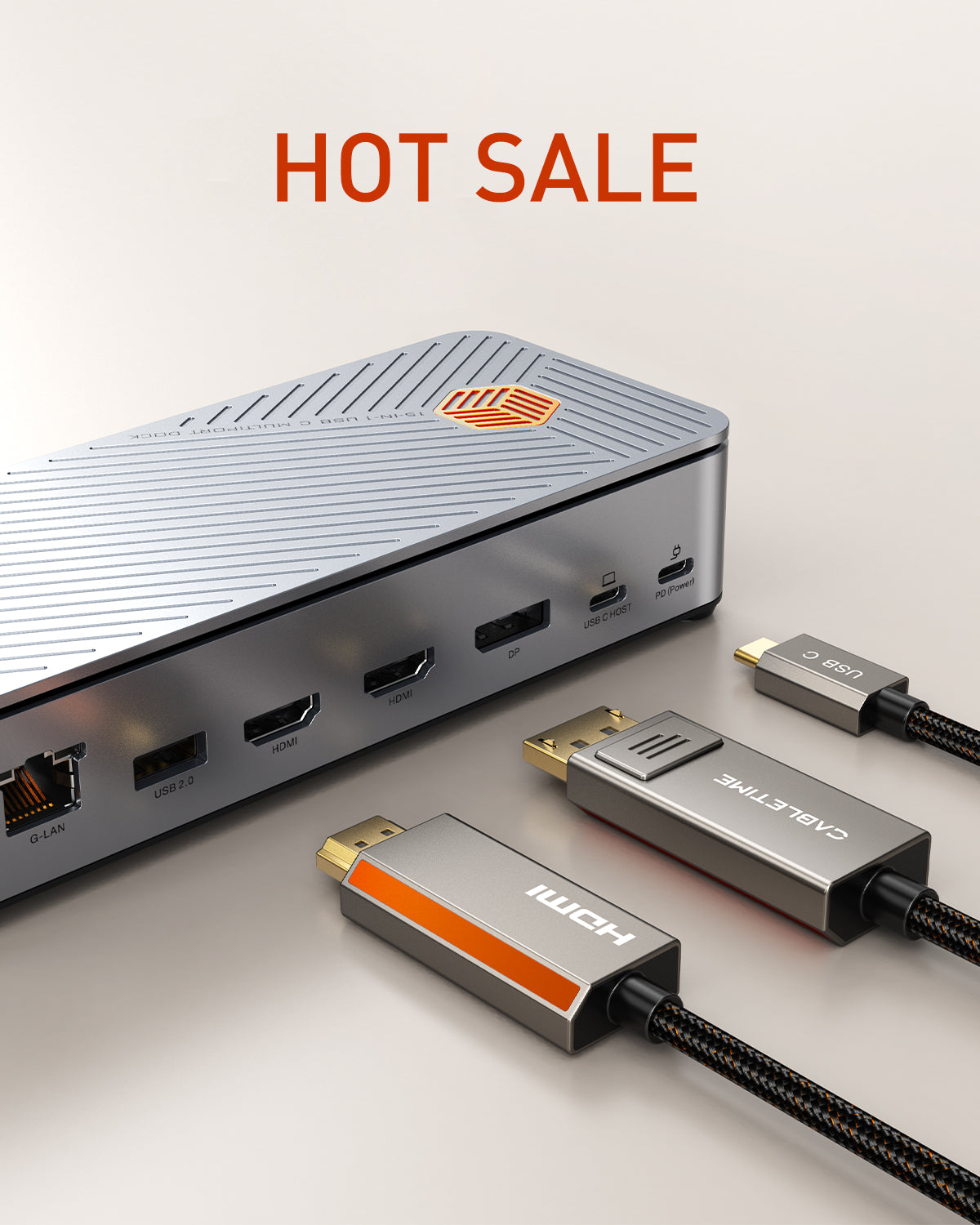
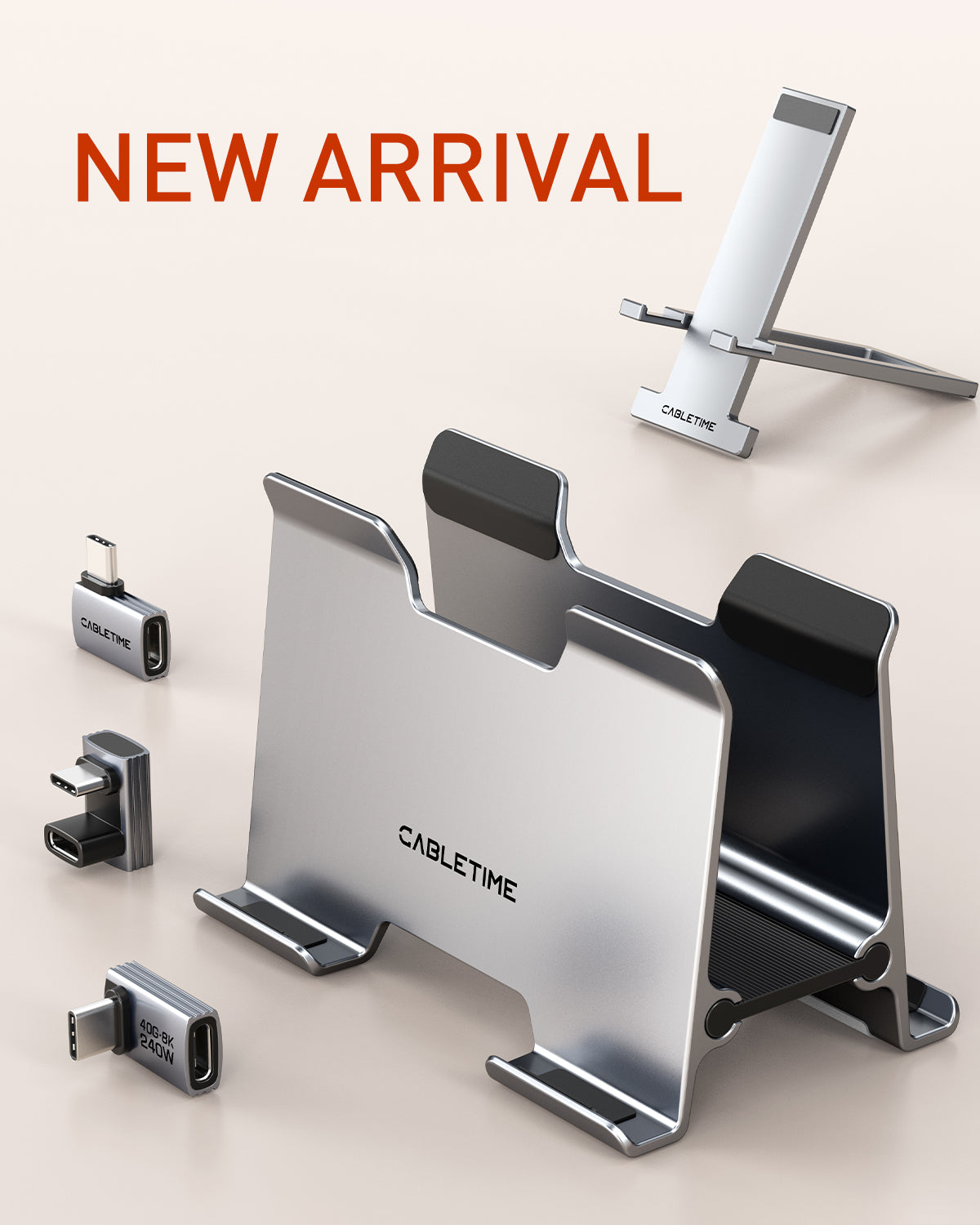
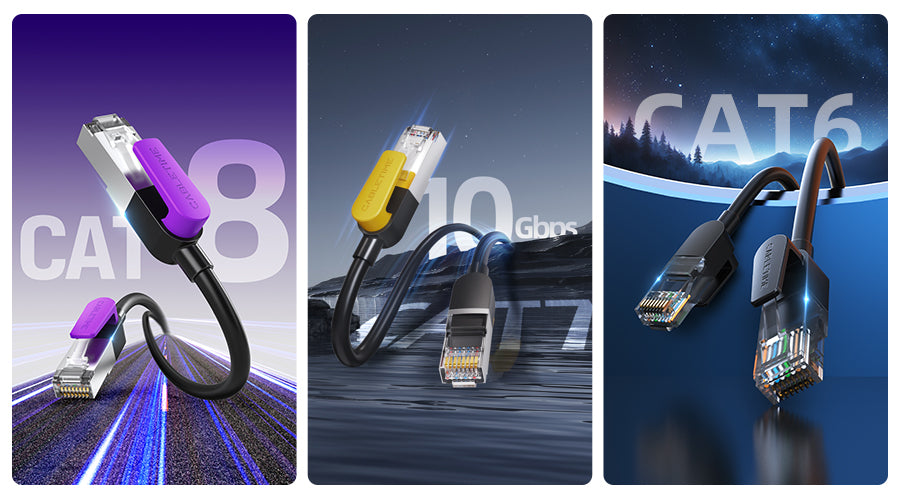
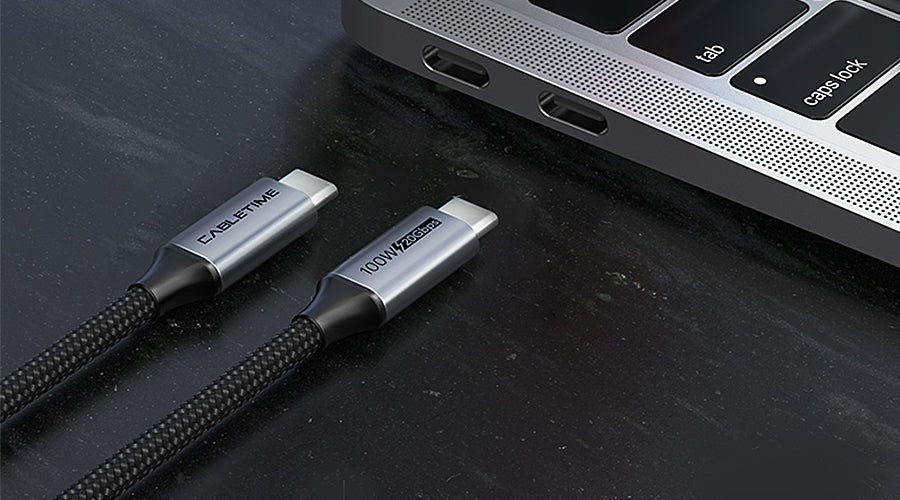
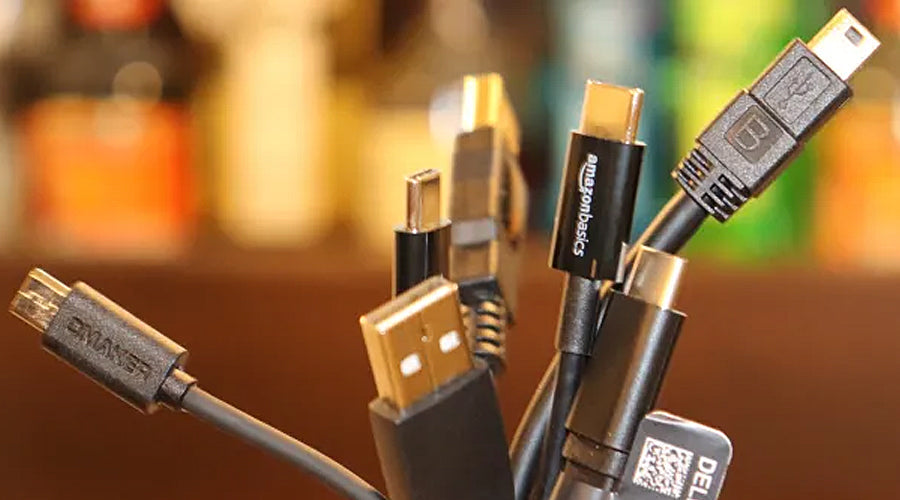
1 komentar
Dintech ltd
Hello Sir /Madam this is Dintech ltd from Rwandan country ,
I hope this email finds you well,
We need to Quotation for Network Cable SFTP CAT 8
Tinggalkan komentar
Situs ini dilindungi oleh hCaptcha dan berlaku Kebijakan Privasi serta Ketentuan Layanan hCaptcha.